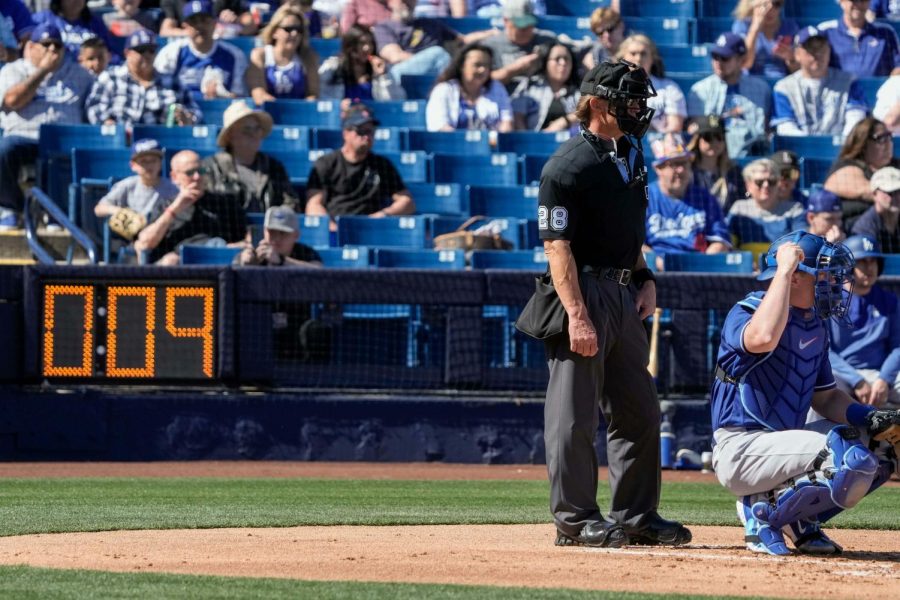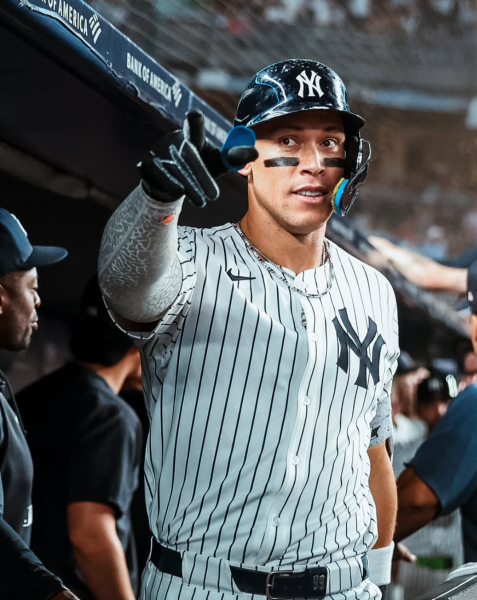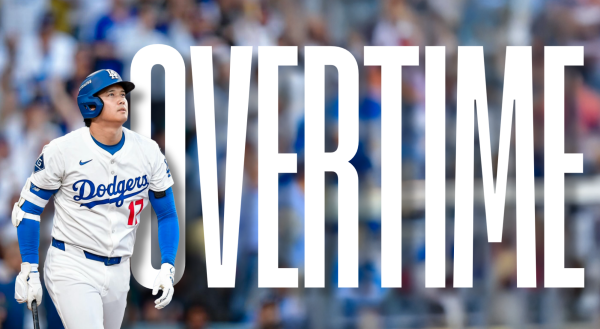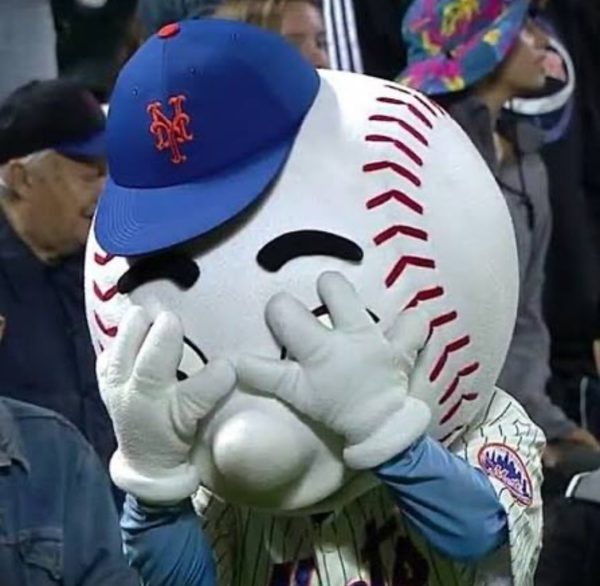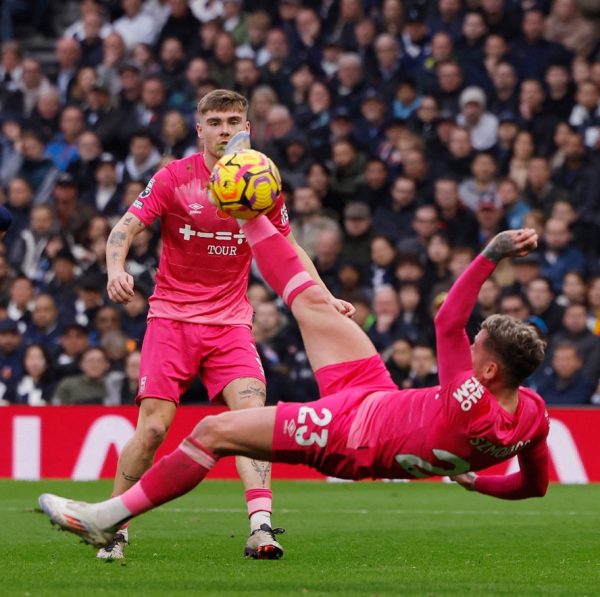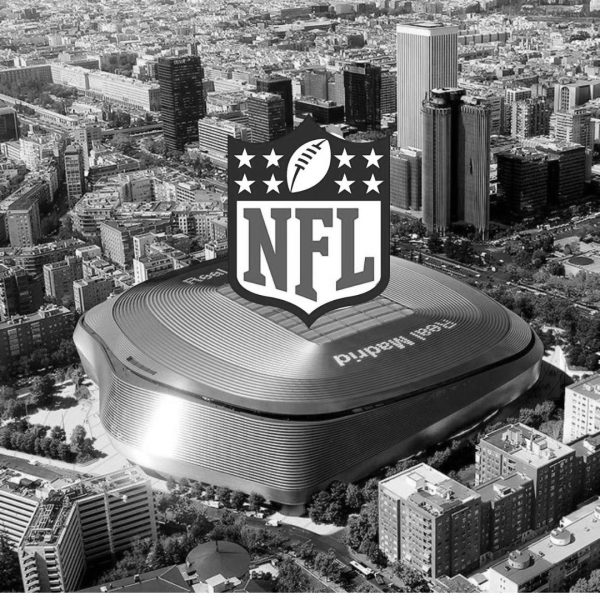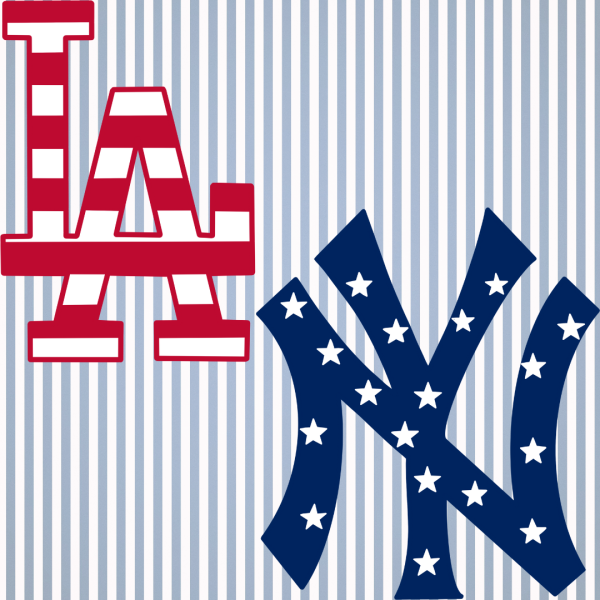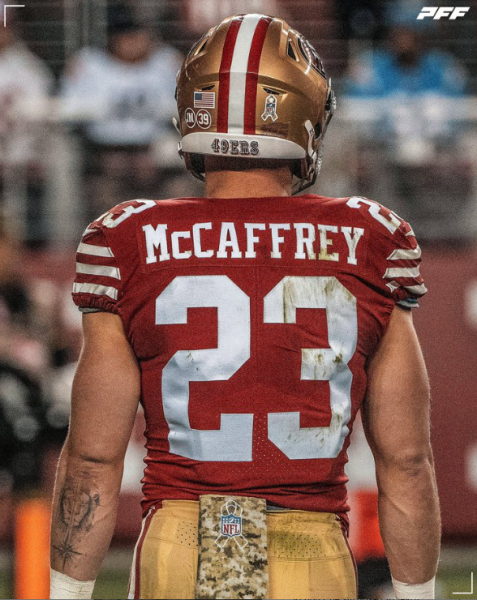Overtime: MLB Pitch Clock Problems: Better Now than Later
Picture the scene. Bottom of the ninth. Tie game. Bases loaded. Two outs. A 3-2 count. You can’t dream up a better scenario. All of the possibilities and all of the tension. No matter what happens, this will undoubtedly be thrilling. We could see a game winning hit or a game saving strikeout. Perhaps even a foul ball to keep things right where we stand. Or maybe… a pitch clock violation resulting in strike three? Well, that seems kind of anticlimactic.
That’s exactly what happened in a Spring Training game between the Atlanta Braves and the Boston Red Sox. With the game tied 6-6, Boston’s Ryan Kwiatkowski got set to deliver a full count, two-out pitch to Atlanta’s Cal Conley. There was just one problem — Conley wasn’t ready to hit. A pitch clock violation was called, and the game ended in a 6-6 tie.
It’s been an inauspicious start for Major League Baseball’s new pitch clock. Starting this season, a timer will be put in place to help improve the pace of play. This involves enforcing a 30-second timer in between batters, a 15-second timer in between pitches and a limit to the number of pickoffs. Furthermore, a batter must be in the box and ready to hit with eight seconds left on the timer. Needless to say, it’s an adjustment, and unsurprisingly, one the fans aren’t too thrilled about.
Anytime changes are made to a sport like baseball in which tradition is so closely rooted to its core, there’s going to be pushback and outrage. And naturally, anytime a game ends because of a pitch clock violation, there’s going to be rage, chaos and potentially threats of extreme violence towards MLB commissioner Rob Manfred.
Now, it’s worth noting that if the Braves-Red Sox exhibition game were a regular season affair, the game would not end, but rather move into extra innings (where fans would get to see a ghost runner at second — but that’s a separate discussion). Still, no one wants to see a game go into extra innings because of a pitch clock violation. Especially not with the bases loaded and a full count. What if the game wasn’t tied? What if a team won a regular season game because of a pitch clock violation? These are all valid concerns that people have every right to ask.
The goal of the pitch clock is to speed up a game that was trending in the wrong direction in terms of average game length. In 2022, the average length of a baseball game was three hours and six minutes. The previous year, it was a record three hours and 11 minutes. In the small sample size of Spring Training, games are averaging closer to two hours and 30 minutes, an average runtime we haven’t seen since the 1970s. If this average were to hold up over the course of the regular season, it would be the first time since 2011 that the average length of an MLB game was under three hours. Outside of a blip in 2000, the average length of a game was under three hours for every season in existence prior to 2012. It’s only been until fairly recently that we’ve crossed the three-hour barrier.
I think it’s important to highlight that this rule has the game’s best interest in mind. A quicker pace would lead to less dead time between pitches and more action every minute. Furthermore, the pitch clock would theoretically make it more difficult for pitchers to throw max effort every pitch. This would suggest an uptick in contact and a decrease in the home run-or-bust, swing-and-miss game about which fans often complain. The MLB very clearly believes that more balls in play equals more action.
Critics raise the point that sometimes the game slowing down is a good thing, particularly in these big moments. I don’t necessarily disagree, but I also think we’re conditioned to think that way because that’s how we’ve consumed every big moment. A couple summers ago, I sat down and watched some of the postseason games from the Mets’ 1986 World Series run. I’m no Mets fan, but it really is some of the best baseball you’ll ever see. One of the things that immediately stands out is how quick the pitchers work. And let me tell you, it never took away from the suspense and the tension of the moment.
Joez McFly, a personality from Jomboy Media and a popular presence on baseball Twitter, posted a clip from the 2016 NLCS between the Los Angeles Dodgers and the Chicago Cubs. On the mound is Pedro Baez, a reliever infamous for taking his time in between pitches. In the clip, there’s nearly two minutes of dead, non-action time in between Baez’s first pitch and second pitch. Simultaneously, a looped video of a Jose Altuve inside-the-park home run was able to play in full seven times. Jose Altuve hit seven inside-the-park home runs in between one pitch to another. That’s insane, and while it’s obviously an extreme example, it is a reminder of how slow these games can get, especially in the big moments.
Right now, the pitch clock doesn’t look great. The important thing to remember is it’s not supposed to look great. The goal of Spring Training is to get MLB players in the rhythm so that they’re ready for the pitch clock come April. Umpires are being told to enforce the pitch clock rules as strictly as possible. The goal is for the pitch clock to be an afterthought. No one wants pitch clock violations, and they certainly don’t want it affecting the game’s big moments.
In the winter, former MLB player Raul Ibanez and EVP of Baseball Operations Morgan Sword, who both served on the rules committee, sat down with Jomboy Media to discuss the rule changes. “Our minor league experience was very bumpy as people get adjusted, and the first couple weeks of Spring Training, you’re gonna see some bumps,” said Sword. “But people get adjusted. The number of violations each week of the minor league season just falls off a cliff. As players get into a routine, they figure it out.” Right now in Spring Training, the average is close to two a game. As players get used to it, that number will fall.
There’s still a lot of uncertainty about how these rules will ultimately be enforced. Recall that a pitch clock has technically been in place for several years, it just hasn’t been enforced. That’s what it really comes down to.
What we all need to keep in mind is this is the point of Spring Training. We have a chance to work out the kinks before it really matters. MLB might have to put in place a new amendment to prevent Mets starter Max Scherzer from manipulating the pitch clock to mess with batters. Who knows exactly what April will look like? There’s a very real possibility that come the regular season, the umpires are not as strict with enforcing the clock as they were in Spring Training.
There’s also the possibility that players will adjust to the speed. As long as games aren’t being decided by pitch clock violations, we should be alright.

Lou Orlando is a junior from Brooklyn, N. Y. majoring in journalism. He joined the Ram as a freshman, writing articles for the sports section. Lou is thrilled...





































































































































































































